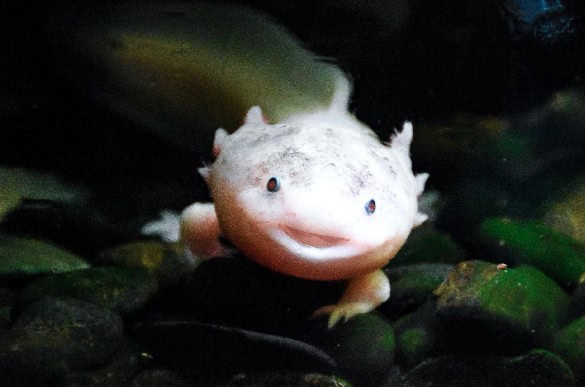Most people have had a pet at some time in their life and many of us cannot imagine having a household without a pet. However, not all people have pets such as cats, dogs, or rabbits. Some pets are far less common! While laws may vary depending on state and country, it is possible to keep some exotic animals as pets if you know how to care for them properly. Here are some interesting animals that are becoming popular companions.
1. Axolotl
What is an axolotl? You will not be blamed if that is your first thought upon seeing the unusual name. The axolotl is an adorable salamander that is native to Mexico. It was discovered in several lakes near Mexico City, including Lake Xochimilco and Lake Chalco. Sadly, much of the axolotl’s natural habitat has been destroyed and the species now exists mostly in captivity as pets and in zoos.
Axolotls typically grow up to nine inches in length and can live up to 15 years in a good home. They spend most of their time resting at the bottom of their water environment. In the wild, axolotls eat small prey such as mollusks, worms, insects, and small fish. In captivity, they can eat fish pellets and live worms or frozen worm cubes. Fresh fish should be avoided as they may contain parasites.
Your tank should be at least 40 gallons in size for a single axolotl and get larger to accommodate more of them. Water temperature should be maintained between 61 °F to 64 °F for optimum health. Chlorine is harmful to axolotls so any tap water with chlorine must be treated before being added to the tank. Aquatic plants can be a helpful addition to provide shelter and water filtration.
2. Ferret
A ferret is a medium-sized member of the weasel family. They are well known for being sociable and playful, making them great pets for families with children. The domestic ferret does not exist in the wild, having been bred for human companionship and hunting. However, it is often confused with the black-footed ferret (Mustela nigripes), an endangered species of ferret native to North America.
Ferrets can live up to ten years in a loving home and weigh about five pounds when fully grown. They love to play with their human friends and other ferrets. They sleep for most of the day—up to 20 hours—and have flurries of activity in the early morning and evening. If you are thinking that ferrets sound a little like cats, you are right! Like cats, ferrets can clean their own coat and do not need to be bathed often.
Highly intelligent, ferrets are good at breaking out of cages. So, you must ensure that they live in a cage that is specially designed for ferrets. They need a clean litter box filled with recycled newspaper or aspen shavings. Their ideal diet is premium commercial pet food that is formulated for ferrets. Ensure that all toys are ferret-safe and do not have small parts that can be chewed or swallowed by your cute but cheeky pet.
3. Bearded Dragon
Native to Australia, bearded dragons are a type of lizard. They are accustomed to the rocky and dry terrain of their homeland and are therefore excellent climbers. They like to rest in the shade of plants, trees, and rocks in the wild. Among reptiles, bearded dragons are among the best choices as they are gentle, a reasonable size, easy to feed, and active during the day, unlike many other reptiles.
An adult bearded dragon can grow up to 20 inches, weigh about a pound, and live for over ten years in a healthy environment. Bearded dragons love to climb and will be often seen basking in the sunshine during the day. They are very tolerant of being handled by their human companions. Due to their popularity in the United States, it is easy to find a reputable breeder of bearded dragons.
You should set up a glass or wood enclosure with a screen top for your bearded dragon and the tank should be at least as large as possible to prevent overheating. Make sure that you add several branches and rocks to the tank to give your pet the ability to move in and out of the heat and shade as needed. A bearded dragon should be fed a healthy diet of leafy green vegetables, live crickets, and calcium supplements.
Having an exotic animal as a pet is a lot of fun but it is always important to remember that they require special care. Take the time to educate yourself about the unique requirements of your exotic pet before purchasing at a pet store or adopting from a shelter. This will ensure that your new companion has a happy and healthy life and save you the stress of dealing with a sick pet.
Remember that the regulations in various regions are different and some pets may not be legal to own where you live. Be sure to check your local laws before trying to bring a new pet home. As long as you are prepared to provide proper care and attention for your new pet, you will be able to enjoy the companionship of an animal with a truly unique personality for years to come.



